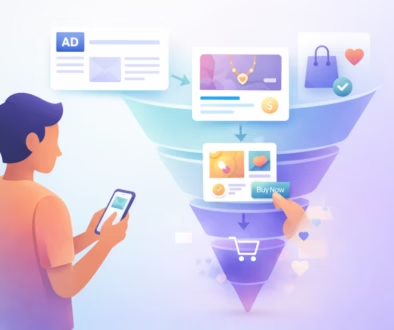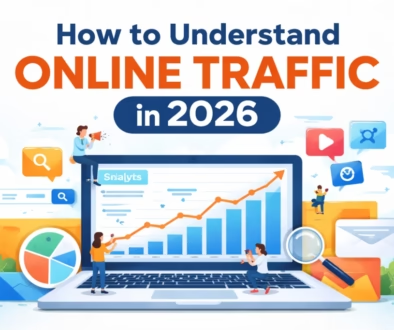AI-Powered Content Marketing in 2025: How to Create, Distribute, and Rank Faster Than Ever
I used to be one of those people who’d spend an entire weekend crafting a single blog post. You know the drill—endless keyword research on Saturday morning, staring at a blank document for hours, writing three different intros before settling on something mediocre. By Sunday night, I’d finally hit publish on something that felt… okay.
Thank you for reading this post, don't forget to subscribe!
Then my coworker Sarah changed everything for me. Not intentionally, mind you. She just casually mentioned during our Monday team meeting that she’d wrapped up an entire content campaign over the weekend. Blog post, social content, email sequence, even a video outline.
“Wait, what?” I interrupted. “That usually takes you two weeks.”
She laughed. “Yeah, well, I finally stopped being stubborn about AI.”
That conversation happened three months ago. Today, I’m publishing twice as much content in half the time, and it’s actually performing better than the stuff I used to agonize over. But here’s what I wish someone had told me earlier: using AI isn’t about finding a magic button that spits out perfect content. It’s about building a system that amplifies what you’re already good at.
Why I Finally Gave In (And Why You Should Too)
Look, I get it. The whole “AI revolution” thing feels overhyped. Every week there’s a new tool promising to transform your business overnight. Most of them are garbage.
But ignoring AI entirely? That’s like refusing to use email because you preferred handwritten letters. The train has left the station.
My friend Marcus learned this the hard way. He runs content marketing for a B2B software company, and by last spring, he was drowning. His team of three was barely keeping up with their twice-weekly blog schedule, let alone creating content for social media or email campaigns.
“I felt like we were constantly playing catch-up,” he told me over coffee last week. “Our competitors were publishing daily, getting featured in industry newsletters, building these massive followings. Meanwhile, we were celebrating when we managed to hit our publishing schedule.”
Fast forward six months. Marcus’s team is now publishing something every single day across multiple channels. Their organic traffic doubled. Their email list tripled. And here’s the kicker—they’re working fewer hours than before.
“The difference wasn’t just the tools,” Marcus explained. “It was learning how to think about content creation as a system instead of a series of individual projects.”
The Reality Nobody Talks About
Google changed how it works this year. Not in the obvious algorithm update way that gets SEO Twitter all worked up. I’m talking about something more fundamental.
Google’s AI has gotten genuinely scary good at understanding context. When someone searches for “email marketing automation,” Google now knows whether they’re a complete beginner looking for basic explanations, a mid-level marketer comparing tools, or an advanced user trying to solve a specific technical problem.
This means the old SEO playbook—stuff your target keyword into your content seven times and pray—doesn’t work anymore. Google wants to see that you actually understand the searcher’s intent and can provide a complete answer to their question.
I learned this lesson the hard way when I spent two weeks optimizing a blog post for “content marketing strategy.” I hit all the technical SEO boxes, but the post barely cracked page two in search results. Meanwhile, a competitor’s article that felt more like a casual conversation with examples from their actual experience ranked #3.
That’s when it clicked: Google isn’t just looking for keyword matches anymore. It’s looking for genuine expertise and helpful content.
My Actual Research Process (No Fluff)
I’ve tested probably fifteen different approaches to AI-powered content research over the past few months. Most of them were either too complicated or produced generic results that could’ve been written about any industry.
Here’s what actually works for me:
Step 1: Get inside your reader’s head Instead of starting with keyword tools, I start with psychology. I’ll open ChatGPT and type something like: “You’re a small business owner who’s been trying to grow your email list for six months. You’ve tried lead magnets, pop-ups, social media promotion. Nothing’s working. It’s 11 PM, you can’t sleep, and you’re googling for answers. What exactly are you typing?”
The results are gold. Real questions that real people ask when they’re frustrated and need solutions. Questions that traditional keyword tools would never surface.
Step 2: Find the gaps your competitors missed I take the top-ranking articles for my target topic and read them like a potential customer would. Not as a marketer looking for keyword density, but as someone who actually needs help.
Usually, I find the same pattern: most articles cover the basics but skip the messy, practical details that people actually struggle with. That’s where the opportunity is.
Step 3: Map out the complete journey This is where most people mess up with AI content. They ask for a blog post about X topic and expect magic. Instead, I map out the entire customer journey and create content for each stage.
Someone searching “email marketing tips” might be at the awareness stage. But someone searching “Mailchimp vs ConvertKit for ecommerce” is ready to make a decision. The content needs to match where they are.
Creating Content That Actually Sounds Human
Here’s my controversial take: most “AI-generated” content fails not because it’s written by AI, but because it lacks a clear point of view.
When I write a first draft with AI, I’m not asking it to create generic content about a topic. I’m asking it to help me articulate my specific perspective based on my actual experience.
Instead of “Write a blog post about email marketing,” I’ll write:
“I’m a content marketer who’s been using email automation for three years. I’ve made every mistake in the book—sending generic broadcasts, ignoring segmentation, writing subject lines that sound like spam. I want to write a blog post that helps other marketers avoid these same mistakes. Here are the specific lessons I’ve learned…”
The AI becomes a writing partner, not a content generator. It helps me organize my thoughts and articulate ideas clearly, but the insights and perspective are mine.
My editing process:
- First draft with AI: Get the basic structure and main points down
- Second draft: Add personal stories, specific examples, and my actual opinions
- Third draft: Read it out loud and fix anything that sounds robotic or generic
- Final draft: Check that every major point is backed up by real experience
SEO That Actually Works in 2025
Forget everything you think you know about SEO for a minute. The stuff that worked even two years ago feels outdated now.
What’s actually moving the needle:
User signals matter more than keywords Google can tell if people find your content helpful, even if they don’t click through to your site. If your content answers their question directly and completely, that’s a ranking signal.
Topic authority beats keyword stuffing One comprehensive, well-researched piece of content on a topic will outrank five shallow articles targeting individual keywords every time.
Intent matching is everything The closer your content matches what the searcher actually wants to accomplish, the better you’ll rank. Period.
I tested this with a client in the fitness space. Instead of creating separate articles for “home workout routine,” “bodyweight exercises,” and “no-equipment fitness,” we created one comprehensive guide that covered all three topics naturally. It now ranks in the top 3 for all those terms plus dozens of long-tail variations we never specifically targeted.
Distribution That Doesn’t Feel Like Spam
Creating good content is only half the battle. Getting it in front of the right people without annoying them is where most creators fail.
Email marketing: I use AI to personalize subject lines based on subscriber behavior, but I write the actual emails myself. The AI helps me identify what topics resonate with different segments of my list, but the voice and personality are mine.
Social media: Instead of cross-posting the same content everywhere, I create platform-specific versions. What works as a LinkedIn post won’t work on Twitter. AI helps me adapt the core message for each platform while maintaining my voice.
SEO distribution: I regularly update older content with new information and examples. AI helps me identify which pieces need refreshing and suggests new angles based on current search trends.
Real Results from Real People
Case Study 1: The consultant who scaled without burning out
My friend Jessica runs a marketing consultancy. Last year, she was working 60-hour weeks and barely keeping up with client work, let alone creating content to grow her business.
She started using AI for content planning and first drafts, but here’s the key: she kept her strategic thinking and client insights as the core of every piece.
Results after 4 months:
- Cut content creation time from 12 hours/week to 4 hours/week
- Doubled her organic website traffic
- Generated enough inbound leads to raise her rates by 40%
- Actually started taking weekends off again
“The biggest shift wasn’t the tools,” Jessica told me. “It was realizing I could systematize content creation without sacrificing quality or authenticity.”
Case Study 2: The ecommerce brand that beat bigger competitors
David runs a small outdoor gear company competing against giants like Patagonia and REI. He couldn’t match their advertising budgets, but he could create more focused, helpful content for specific customer segments.
He used AI to identify long-tail keyword opportunities and create detailed buying guides for specific use cases. Instead of writing about “hiking boots” (impossible to rank for), he created content around “waterproof hiking boots for Pacific Northwest trails” and similar specific queries.
Results after 6 months:
- Ranking on page 1 for 89 new long-tail keywords
- Organic traffic increased 180%
- Content-driven sales up 67%
- Built an email list of 12,000 engaged outdoor enthusiasts
“We stopped trying to be everything to everyone,” David explained. “AI helped us find the specific problems we could solve better than anyone else.”
Case Study 3: The B2B company that cracked thought leadership
Amanda leads marketing for a project management software company. They were struggling to compete with established players like Asana and Monday.com for generic keywords.
Instead of competing head-to-head, she used AI to identify content gaps around specific use cases and industry challenges. They started creating content for “project management for creative agencies,” “construction project workflows,” and other niche angles.
Results after 8 months:
- Established thought leadership in three specific verticals
- Organic leads increased 156%
- Average deal size increased 34% (more qualified leads)
- Speaking opportunities at industry conferences doubled
“We realized we didn’t need to rank #1 for ‘project management software,'” Amanda said. “We needed to be the obvious choice for our specific ideal customers.”
Staying Authentic in an AI World
The question I get most often: “Doesn’t using AI make your content less authentic?”
Here’s my take: A carpenter using power tools doesn’t make the furniture less authentic. What matters is the craftsmanship, the design decisions, and the problem you’re solving.
My rules for ethical AI content:
- Never publish AI content without adding your own perspective and experience
- Fact-check everything (AI can confidently state complete nonsense)
- Be transparent when AI played a major role in content creation
- Use AI to enhance your ideas, not replace them
The brands that get AI content right aren’t using it to cut corners. They’re using it to scale their existing expertise and reach more people who need their help.
Your 30-Day Getting Started Plan
Week 1: Foundation
- Choose 2-3 AI tools (don’t go overboard)
- Audit your current content performance
- Identify your unique perspective and expertise
- Create basic templates for your most common content types
Week 2: Process development
- Test AI-assisted research for one piece of content
- Write your first AI-assisted blog post using the process I outlined
- Set up basic automation for content distribution
- Track what works and what doesn’t
Week 3: Optimization
- Refine your content creation workflow
- Create social media variations of your blog content
- Set up email sequences to promote your content
- Start building topic clusters around your core expertise
Week 4: Scaling
- Develop content calendars for the next quarter
- Create systems for consistent publishing
- Set up analytics to track performance
- Plan your next phase of content topics
What I Wish Someone Had Told Me Earlier
The biggest mistake I made when starting with AI content was treating it like a replacement for strategy and creativity. AI is a tool that amplifies your existing skills and knowledge. It doesn’t create expertise out of thin air.
The brands winning with AI content have strong points of view, deep expertise in their space, and genuine desire to help their customers. AI just helps them share that expertise more efficiently.
The future belongs to creators who can:
- Combine AI efficiency with human insight
- Maintain authentic voice at scale
- Focus on serving their audience rather than gaming algorithms
- Adapt quickly as technology evolves
Ready to Get Started?
The AI content revolution isn’t coming—it’s already here. Your competitors are either already using these approaches or they’re about to start. The question is whether you’ll be ahead of the curve or playing catch-up.
Start small. Pick one piece of content and try the research process I outlined. See how it feels. Adjust based on your results.
Remember: the goal isn’t to publish more content. It’s to publish better content that actually helps your audience solve problems. AI just makes that process faster and more systematic.
The best time to start was six months ago. The second-best time is right now.
What’s the first piece of content you’re going to create?



